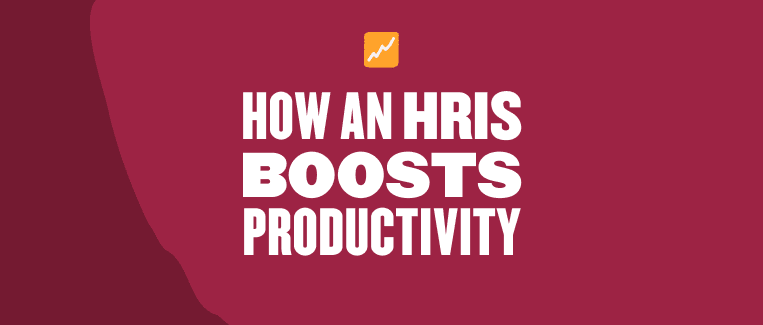As an HR professional, your day is packed with tasks. From phone interviews with job candidates and filling out benefits paperwork to responding to what feels like hundreds of emails, you’re busy all day. The problem is that too many of those tasks are repetitive and manual busywork, pulling your attention away from the more valuable and needle-moving things you really want to focus on.
You rarely feel like you’re being as productive as you want to be, and the truth is that you’re probably not. According to Gallup research, “the percentage of engaged workers in the U.S. declined in 2021” for the first time in 10 years.
So, how do you become more productive? For a department as diverse as HR, the key is implementing technology and systems that can streamline processes and automate your more repetitive tasks to allow you to save time and focus your attention on improving KPIs. That, ladies and gentlemen, is where an HRIS comes in.
What does an HRIS have to do with productivity?
Pretty much everything. A great Human Resource Information System (HRIS) can go beyond just giving you a place to organize data. It can also play a big role in HR’s productivity by offering tools that allow you to extract valuable insights and streamline processes. Use your HRIS wisely, and you’ll save time and improve KPIs in the HR department and beyond.
Top 4 ways to improve productivity using HRIS
Using HRIS is an easy (and fun) way to boost productivity and start seeing results in your company ASAP. We’ve rounded up our top four ways to improve productivity with HRIS below:
1. Automate the repetitive stuff
Raise your hand if you dedicate more of your day than you’d care to admit to the same repetitive (see: boring!) tasks. We’re talking about clicking around spreadsheets, doing paperwork, manually entering the same data into different places, updating records, and sending the same canned emails again and again. Sound familiar?
All of this repetitive work is frustrating and a waste of time. Imagine if you could focus on the more interesting and impactful innovation and company culture work you’d rather be doing.
That’s why HRIS’ ability to automate your processes is so useful. Those birthday greetings will still be sent, new equipment will still be ordered, regular meetings will still be scheduled, and so on–they just won’t take up half your day anymore.
2. Help employees help themselves
The HR department is like the encyclopedia of a company. The issue? The information in the department is often difficult to access. This includes things like PTO, expenses, training, benefits, and more. When people have no way to access this information other than to submit questions to HR, it wastes everybody’s valuable time.
With an HRIS, team members can take the lead in checking their vacation day balance, enrolling in benefits, submitting requests for reimbursement, and so on. This eliminates a lot of extra work for HR, saving time and reducing headaches. The result? Both employees and HR are more productive.
3. Measure performance to boost employee productivity
For the best results, performance monitoring needs to be an ongoing process where managers regularly offer their people feedback that they can implement continually. HRIS systems can be a major help, functioning as a place where performance data points are stored, and people can find real-time, actionable feedback from management.
Not only will people know how they can improve, but the HRIS will provide tons of valuable performance data people can track and mine for insights about how to boost productivity on teams.
Recommended For Further Reading
4. Keep your people satisfied and engaged
It’s no secret that people’s happiness and engagement play a major role in their productivity: According to Gallup’s 2021 State of the Global Workplace report, employee engagement is at a low of 20 percent, leading to lowered productivity and innovation. Creating a company culture that fosters employee satisfaction and engagement can be tricky. That’s where your HRIS comes into play.
Your HRIS can help collect and track valuable data on people’s engagement across your company. And it’s more quantitative than you may think. The employee net promoter score (eNPS), which assesses job satisfaction by asking employees how likely they are to recommend your organization to others, is great.
Keeping an eye on eNPS scores in your HRIS will help you better track and understand various important factors like:
- Which of your people are engaged
- Which aren’t
- Why that might be the case
- What initiatives you could potentially create that will improve employee engagement and, with it, productivity
The bottom line
Human Resources touches every single member of an organization, no matter their place in the structure. When HR can streamline administrative processes and put their focus on more strategic areas, they’re not the only ones who become more productive–the entire company does. An HRIS can facilitate this change, and that’s why it’s an invaluable tool for HR departments everywhere.


